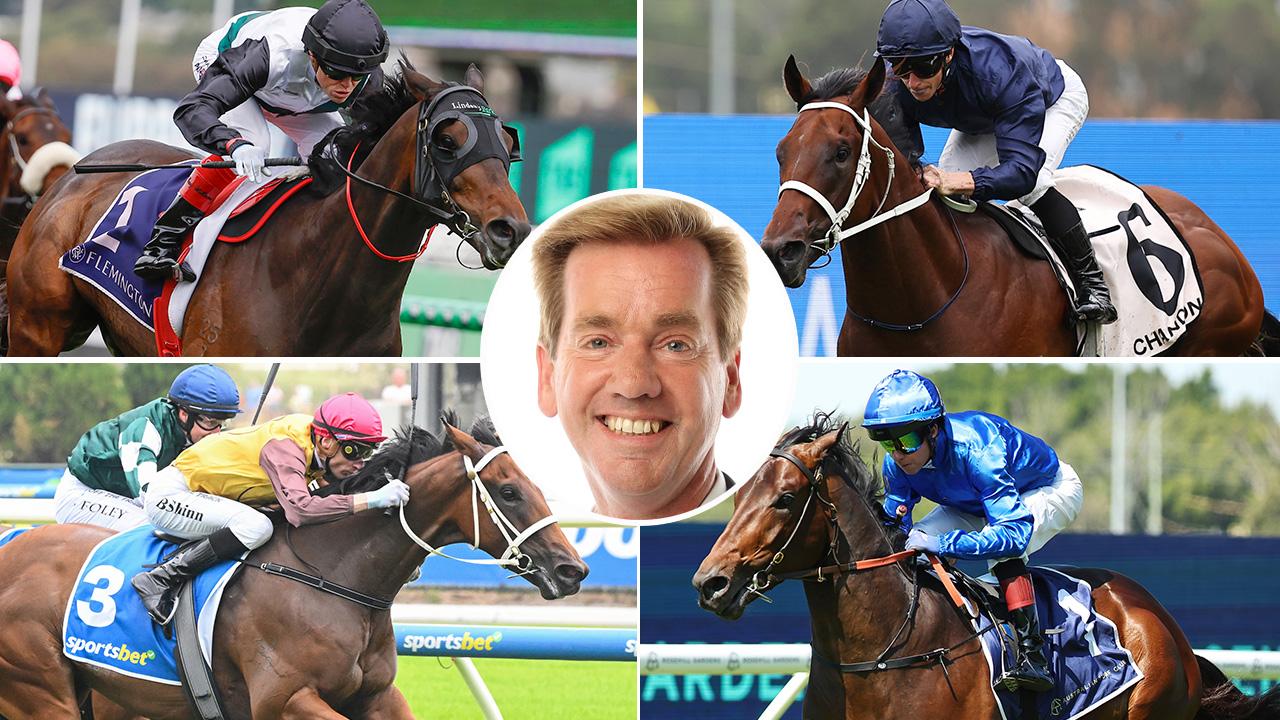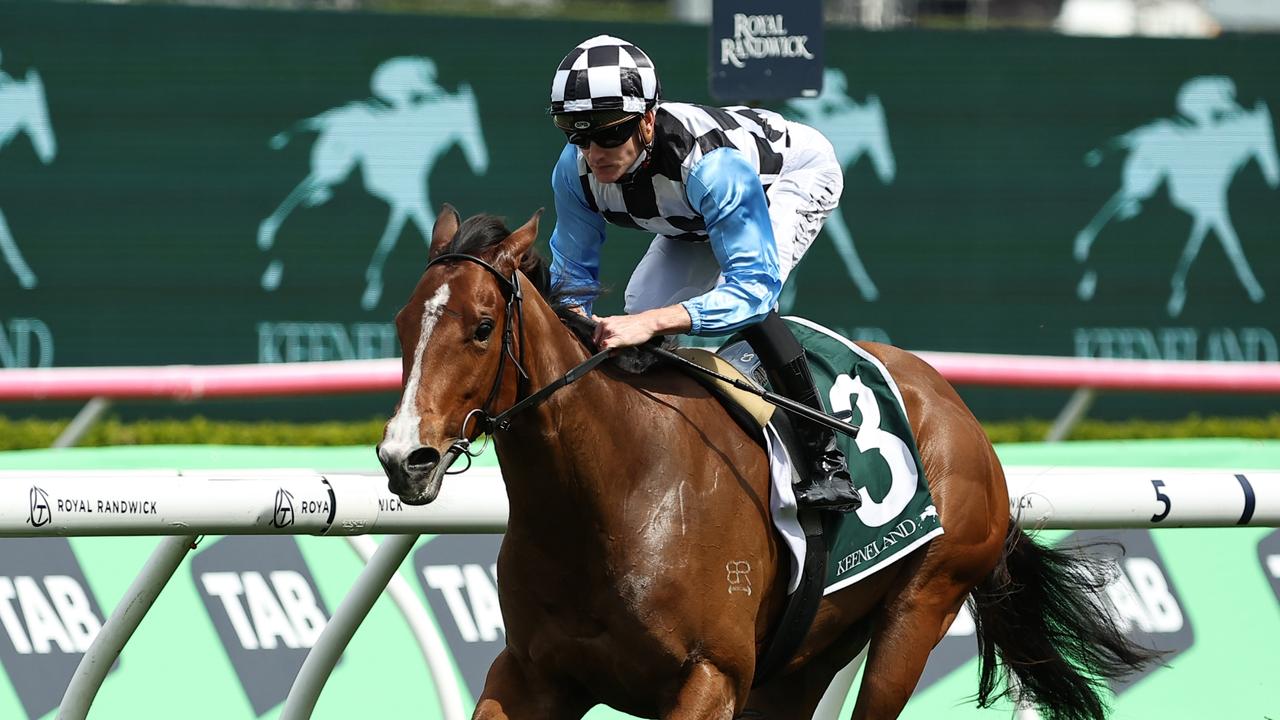Past the post: How thoroughbreds like Hartnell are cared for after racing
For thoroughbreds, life after racing is increasingly comfortable, thanks to new standards of care implemented by trainers, breeders and industry regulators.

The world has slowed for most in 2020, and for thoroughbred champion Hartnell it has been a welcome change of pace.
Life in lockdown for the retired gelding has coincided with his transformation from racehorse to show horse, and according to his trainers he is taking the career change in his (albeit much slower) stride.
The nine-year-old, a British-bred light bay with a striking white blaze, began retraining in February after a highly successful racing career. He regularly rivalled queen of the turf Winx – coming runner-up to her three times – won four Group 1 races and amassed more than $7m in prize money.

He’s now the flagbearer of Godolphin’s Lifetime Care program, which is aimed at ensuring quality of life and facilitating careers for horses after racing.
Hartnell’s cheeky personality, smart intuition and love of the limelight endeared him to Godolphin’s assistant trainer Reg Fleming – who previously helped run Bart Cummings’ stable – during his time on the track, and upon Hartnell’s retirement from racing Fleming was granted a custodianship to lead him through the retraining program.
Fleming and his long-term training partner, Sheralee Patterson, have been taking Hartnell through the motions over the past few months, helping him adjust his body and skillset to become a show hack.
The pair decided Hartnell’s good looks, intelligence and desire to perform would be most suited to this particular equestrian sport, as show hacks are judged on their graceful movement and accurate paces, as well as their obedient response to the rider’s touch and aesthetic presentation.
The journey from “track to hack” can take twists and turns, but Patterson says Hartnell is taking to his new role like a duck to water.
“He’d been racing and doing the same thing for so long and he was definitely set in his ways, but he’s adapted to a new lifestyle pretty easily and quickly,” she says.
“It definitely helps that he’s such a well-mannered horse. He likes to do well, he loves a challenge and he keeps stepping up. We’re on the same wavelength. He also loves his cuddles, which is a plus.”
Patterson is no stranger to the process of retraining racehorses, having worked with other well-known retired thoroughbreds, including Precedence and Moher.
Her father – John “Patto” Patterson – was the head clerk of the course at Flemington for 50 years and the family business breaks in horses.
“Once you’ve got horses in your blood, that’s it; you never get out of it, you love it,” she says.
It’s not only the superstars of the turf that Godolphin rehome or retrain; lesser-performed thoroughbreds, like Radcliffe, a one-time winner, are provided the same care and opportunities.
While Radcliffe never reached the heights on the track like Hartnell, he has found his long-term home as the much loved and admired companion of 16-year-old eventing champion Mercadies Mitchell.

Racing organisations, leading trainers and syndicators say they recognise the importance of life after racing as a key responsibility and commitment as part of the industry’s operations.
Racing NSW’s welfare program has been in place since 2012, and the body announced in 2016 that one per cent of all prize money won in the state would go towards a horse welfare fund. Other states have since followed and implemented this welfare initiative.
The thoroughbred racing industry has recently further strengthened and introduced new measures aimed at protecting the vulnerable animals following media reports critical of the treatment of racehorses.
Key to the reforms in NSW and the ACT was a jurisdiction-first ban on the practice of discarding unwanted racehorses at abattoirs, and this is supported by the banning of the sale of thoroughbreds at non-industry livestock auctions.
The strict prohibition was introduced to the official Rules of Racing in both states. Other states introduced revamped rehoming and animal welfare policies.
Racing NSW has also invested in three large properties across the state – at Capertee, Penrith and Taree – to house retired racehorses, who, if they aren’t suitable to be rehomed for health or behavioural reasons, are cared for on the property until their death.
“We made a commitment that we don’t want any thoroughbred to ever end up at a knackery or an abattoir, or end up having to be put down unless it was in the horse’s best interests,” says Racing NSW chief operating officer Graeme Hinton.
“We raise the thoroughbreds, they were born into our industry, and we believe we should look after them until the right thing to do is for them to be put down – either because of age, sickness or injury.”

Racing Victoria has initiated a RESET (Racehorse Evaluation, Support, Education and Transition) program that provides support to horses that have good prospects but have not been successful in transitioning to a second career outside of racing. The program has been trialled for two months and currently involves 10 horses.
“The predominant issue was that horses are out of the industry for a number of years, they lose their value and purpose, and that’s when they end up with the poor welfare outcomes,” says Jennifer Hughes, Racing Victoria’s general manager of equine welfare.
“So that’s the focus area – how do we make sure the next transitions are successful?”
Racing Victoria will also fund a new euthanasia program – yet to be launched – to assist owners and trainers to humanely euthanise their horses at home if it is deemed appropriate to do so.
“We want owners to have access to funded euthanasia at home, with the idea being that we incentivise it to build cultural and behavioural change as to how it is dealt with,” Hughes says.
In an industry steeped in tradition, one common thread runs through those who work with thoroughbreds – waking up at 3am to exercise those in training, or being out on the farm near midnight foaling a broodmare down – and that is their adoration of their charges.
The COVID-19 pandemic has seen most equestrian events cancelled, particularly in Victoria, so Hartnell will have to enjoy life in the slow lane for a few more months before testing out his new skills in the show ring.
“We’re excited for his future, but also the futures of all retired thoroughbreds,” Patterson says. “It’s important that people see the good side of how horses are rehomed, how they’re loved and can go on to a new career and are so energised by it.”






